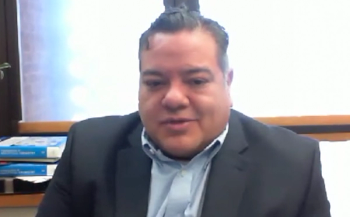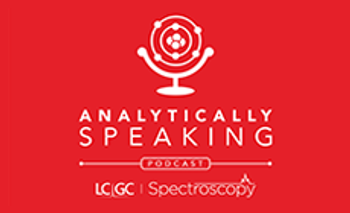
- November/December 2024
- Volume 39
- Issue 8
- Pages: 46–47
Navigating a Career in National Laboratories
Spectroscopy sat down with Benjamin Manard, senior R&D staff and group leader for chemical and isotopic mass spectrometry at Oak Ridge National Laboratory, to discuss his career in the National Laboratory system, and his advice for scientists interested in following a similar path.
Spectroscopy sat down with Benjamin Manard, senior R&D staff and group leader for chemical and isotopic mass spectrometry at Oak Ridge National Laboratory, to discuss his career in the National Laboratory system, and his advice for scientists interested in following a similar path.
When did you first know that you wanted to pursue a career working in National Laboratories? How did you land your first job?
I first knew I wanted to work in a National Laboratory at the 2014 Winter Conference on Plasma Spectrochemistry in Amelia Island, Florida when I had watched Gary Van Berkel of Oak Ridge National Laboratory (ORNL) give an eye-opening plenary lecture on all his works related to ambient surface sampling and ionization mass spectrometry. That lecture was sort of a culmination of ideas that had gone through my head considering I had just published a
I had also just completed an eight-month visiting scientist position at Lawrence Berkeley National Laboratory in Berkeley, California, where I got to work with renowned scientists, including Richard E. Russo, Jhanis J. Gonzalez, and Vassilia Zorba. It was during this time I was able to fully appreciate the science that can be achieved in the National Laboratory system.
Following Van Berkel’s presentation, I realized that working at a National Laboratory, at that time, specifically ORNL, and hopefully under Van Berkel, was a career that I wanted to pursue.
Now, fast forward from that plenary lecture, when I did not receive an offer to work at ORNL as a post-doctoral associate. Of course, I give Vilmos Kertesz, who worked with Van Berkel and who I now work with at ORNL, a hard time any opportunity I get. But I was offered a position to work at Los Alamos National Laboratory (LANL) under Ning Xu, via my mentor and friend, Rick Russo. This position at LANL taught me so much in regard to being an analytical chemist, specifically with trace element analysis. A realization of measurement science including accuracy, precision,and uncertainty, was achieved. The mentorship of Ning Xu laid the foundation of my career in the National Laboratory system.
Have you had any mentors? How have they helped you grow your career?
For sure, I wouldn’t be in this position without them. It started at Georgia Southern University when Shannon Davis and Marion Welch gave me the opportunity as an undergraduate student to perform research and assist in maintaining the Analytical Chemistry and Instrument Analysis Laboratory. It’s here where I truly became infatuated with analytical chemistry and instrumentation. R. Kenneth Marcus, my PhD advisor at Clemson University, directed me into the field of analytical atomic spectrometry. He taught me how to approach scientific problems and to be a thinker. Additionally, he taught me how to be a communicator of science, whether that means a presentation, report, manuscript, or even a discussion with colleagues and friends at various conferences. Lastly, my National Laboratory, primarily consisting of Richard Russo (Lawrence Berkeley National Laboratory), Ning Xu (LANL), and Cole Hexel (ORNL). These mentors really shaped my understanding of the National Laboratory structure and how to be a successful analytical chemist.
What considerations should scientists make when choosing a career path in National Laboratories versus academia or industry?
This is a great question. Obviously, when choosing a career path, there are many facets to be considered. I think the national laboratory system allows for engagement in research and development (R&D), teaching and mentoring the next generation of scientists, and tackling challenging problems. To me, it’s kind of the best of all worlds. Other considerations include geographical location, since there are a handful of national laboratories.
What have you learned throughout your time working at LANL, ORNL, and Lawrence Berkeley National Laboratory?
My tenure in the National Laboratory system has centered on the scientific team. Being an analytical chemist, much of my research provides high-fidelity trace element and isotopic measurements. But, of course, there are many other analytical considerations, including chemical, molecular, and morphological, to consider when tackling challenging problems. This mindset truly shows the power of working in a National Laboratory, and being able to congregate scientists with various backgrounds to tackle such problems. I have also learned how vital it is to help train the next-generation analytical scientist. We are lucky in the sense that we can collaborate with academia. These collaborations allow for engagements with students of all levels.
What skills (hard skills and soft skills) do you think are important for young scientists to develop when pursuing a career in spectroscopy?
Laboratory, benchtop, and instrumentation skills are always necessary to be a great analytical scientist. Attention to detail, precision, accuracy, and note keeping in the laboratory lends itself to produce high-fidelity measurements. Also, and possibly more importantly, have an understanding of how the measurement works. Understanding these fundamental processes will allow for a better design of analytical sessions, including appropriate quality control samples and blanks.
What advice do you have for scientists who are interested in getting a job at a National Laboratory?
Reach out to National Laboratory scientists. Start the engagement early. If you see a line of research you are interested in, then reach out to the respective individuals. Conferences are also a great place to connect and have discussions regarding the positions. At the previous SciX Conference (Raleigh, North Carolina), I had many fruitful engagements with students describing the work which can be done in a National Laboratory setting. These connections are important, especially when opportunities arise for student, post-doctoral, or staff positions that may become available.
References
(1) Marcus, R. K.; Burdette, C. Q.; Manard, B. T.; Zhang, L. X. Ambient Desorption/Ionization Mass Spectrometry Using a Liquid Sampling–Atmospheric Glow Discharge (LS-APGD) Ionization Source. Anal. Bioanal. Chem. 2013, 405 (25), 8171–8184. DOI:
About the Interviewee
Articles in this issue
about 1 year ago
Do We Qualify or Validate a Spectrometer?about 1 year ago
The Big Review III: Molecular Vibration Theoryabout 1 year ago
Raman Microscopy for Characterizing Defects in SiCabout 1 year ago
Vol 39 No 8 Spectroscopy November/December 2024 Europe PDFabout 1 year ago
The Role of Imaging in Preserving WetlandsNewsletter
Get essential updates on the latest spectroscopy technologies, regulatory standards, and best practices—subscribe today to Spectroscopy.




